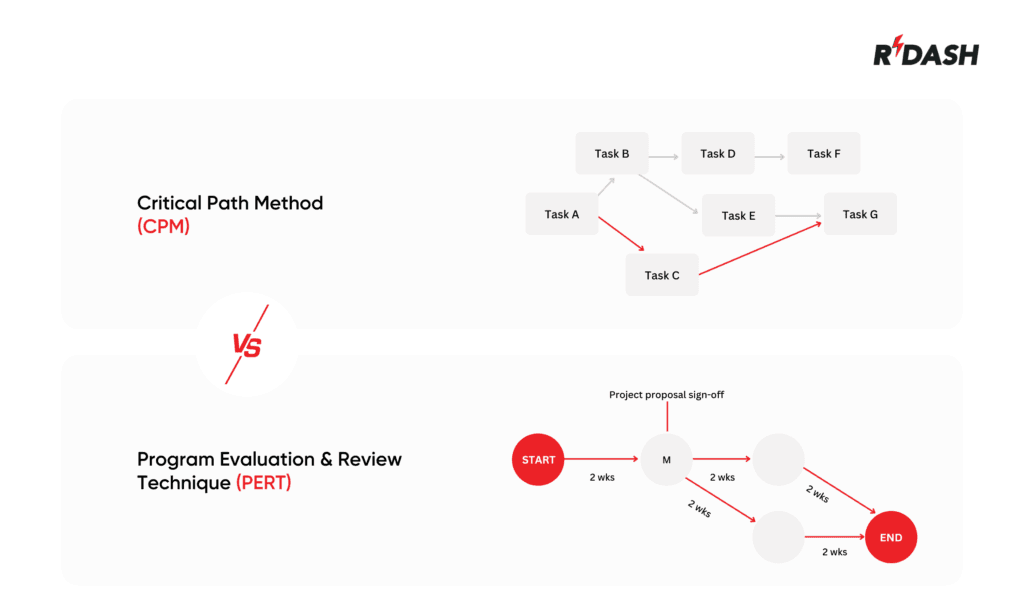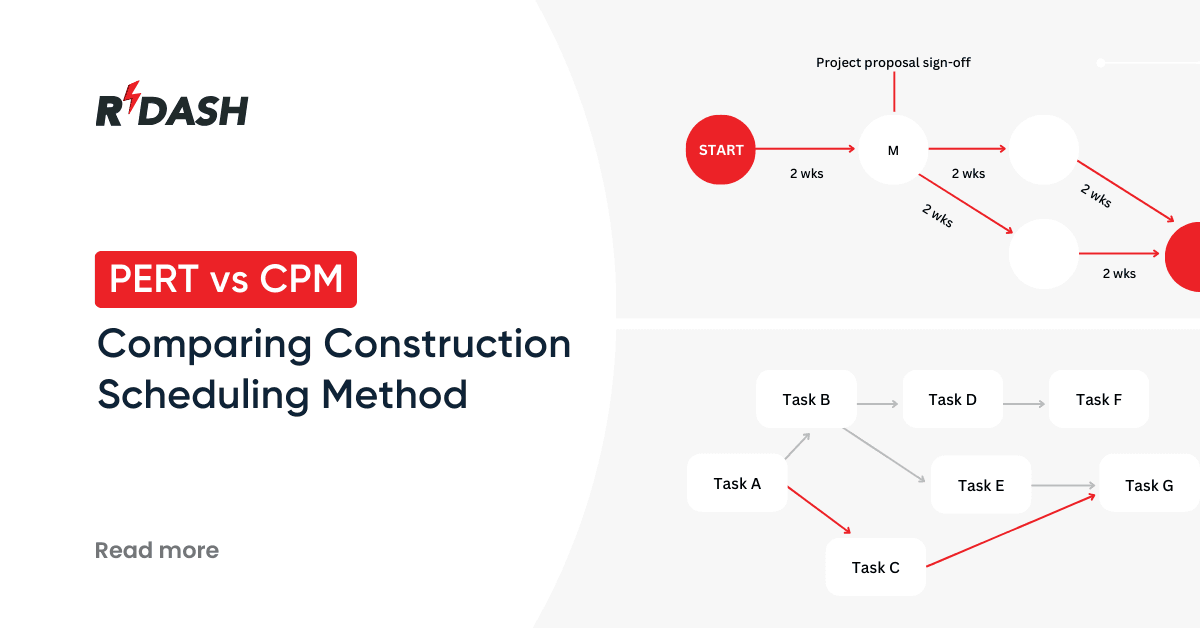What is PERT?
PERT, or the Program Evaluation and Review Technique, is a project management tool used to schedule, organize, and coordinate tasks within a project. PERT is especially valuable in projects where the time to complete various tasks is not predictable. This method involves identifying the specific tasks necessary to complete a project and estimating the minimum time needed to complete each task. It helps project managers analyze the tasks and create a timeline based on the longest path through these tasks.
When to Use PERT
PERT is most effective in projects that involve a series of activities, each dependent on the completion of the previous one, and where there is uncertainty about the duration of each activity. It is ideal for large and complex projects that require careful planning and coordination, such as research and development projects, engineering projects, and implementation of new services. PERT is particularly valuable when precise time management is crucial and the scope for the delay is minimal.
What is CPM?
The Critical Path Method (CPM) is another project management tool, similar to PERT, used to sequence project activities to determine the minimum completion time for a project. CPM involves listing every necessary task, determining the duration for each task, and noting dependencies between tasks. Unlike PERT, which uses a probabilistic time estimate, CPM is typically based on fixed time estimates.
Identifying the Critical Path
In CPM, the critical path is the sequence of project network activities which add up to the longest overall duration. This approach establishes the minimum possible duration required to finish the project. Any delay in any of the activities on the critical path directly impacts the planned project completion date. Identifying the critical path helps managers prioritize which tasks need strict monitoring and resource allocation to ensure the project is not delayed.
When to use CPM
The Critical Path Method (CPM) is best utilized in projects where the duration of tasks is predictable and the project scope is well defined. It is particularly useful in construction projects, software development, or any project that involves complex interdependent tasks. CPM helps to identify the most crucial tasks that impact the project timeline and focuses resources on ensuring these tasks are completed on time. It is ideal for projects that require detailed management of individual tasks and their timings to prevent project delays.
PERT vs CPM – Difference
While both PERT and CPM are project management tools used for task scheduling and planning, they differ significantly in their approach and application:
| Aspect | PERT | CPM |
|---|---|---|
| Time Estimates | Uses probabilistic time estimates: optimistic, most likely, and pessimistic. | Uses deterministic time estimates with a single, fixed duration for each task. |
| Application | Suitable for R&D and projects with high uncertainty in activity duration. | Ideal for construction projects and other tasks with well-defined activities. |
| Focus | Focuses on minimizing project duration and handling uncertainties in time estimates. | Focuses on managing critical tasks to prevent project delays. |
| Methodology | Employs network diagrams that accommodate multiple time estimates and variability. | Utilizes a straightforward network diagram focusing on task dependencies and schedule. |
| Primary Use | More common in projects where precise activity times are difficult to estimate. | Commonly used in projects requiring strict timeline management with known durations |
Using PERT and CPM in Project Management

Project management often involves complex and multifaceted processes where efficient planning and scheduling are crucial. Two of the most effective methodologies used in project management to streamline and optimize these processes are PERT (Program Evaluation and Review Technique) and CPM (Critical Path Method). Understanding how to use these tools can significantly enhance project efficiency and success.
Application of PERT and CPM
- Planning: Both PERT and CPM are invaluable during the planning phase. They help project managers define tasks, establish sequences, and identify critical and non-critical activities. This organization is crucial for setting realistic timelines and allocating resources effectively.
- Scheduling: After planning, scheduling involves assigning start and completion dates to project tasks. CPM is particularly useful for scheduling as it focuses on critical tasks that determine the project duration. PERT, with its probabilistic time estimates, helps in anticipating variations and preparing contingency plans.
- Monitoring and Control: Throughout the project lifecycle, monitoring progress against the planned schedules and making necessary adjustments is vital. PERT and CPM provide frameworks to track progress, identify bottlenecks, and implement corrective actions promptly to keep the project on track.
PERT/CPM Chart Example
A PERT/CPM chart is a visual representation of a project’s timeline. The chart typically includes:
- Nodes: These are points representing events or milestones in the project, such as the start or end of tasks.
- Arrows: These lines connect the nodes, indicating the sequence of tasks. Arrows in CPM denote dependencies between tasks, while in PERT, they might also reflect task durations under different scenarios (optimistic, most likely, pessimistic).
- Critical Path: Highlighted in the chart, this path shows the longest duration of time in which the project can be completed. Delays in activities on the critical path have a direct effect on the overall project duration.
These charts are not just tools for planning but also act as ongoing references throughout the project to ensure all team members are aware of their roles, dependencies, and deadlines.
Incorporating PERT and CPM into your project management practices can facilitate better strategic planning, risk management, and efficiency, leading to successful project outcomes. Whether managing a small team project or overseeing large-scale construction, these methodologies adapt to provide clarity and control over complex project variables.
Advantages and Disadvantages of PERT
Advantages of PERT
- Flexibility in Planning: PERT allows for flexibility and adjustments as it considers uncertainties in project timelines by using optimistic, pessimistic, and most likely time estimates.
- Improves Communication: By visualizing the project’s tasks and timelines, PERT charts enhance communication among team members and stakeholders, ensuring everyone understands the project scope and deadlines.
- Resource Management: Helps in better allocation and management of resources by identifying critical and non-critical paths which facilitate prioritization of tasks.
Disadvantages of PERT
- Complexity: PERT can become complex and cumbersome, especially for large projects with many activities and dependency links.
- Time-Consuming: Creating and updating PERT charts can be time-intensive, especially if the project scope changes frequently.
- Estimation Challenges: The accuracy of PERT relies heavily on time estimates, and incorrect estimates can lead to project delays and mismanagement.

Advantages and Disadvantages of CPM
Advantages of CPM
- Identifies Critical Path: CPM clearly identifies the critical path, which helps managers focus on the tasks that directly impact the project timeline.
- Reduces Project Duration: By focusing on critical path tasks, CPM helps in reducing the overall project duration through better scheduling and resource allocation.
- Cost Control: CPM allows for better cost control by identifying the tasks that must be prioritized to avoid delays, thereby potentially reducing overhead costs.
Disadvantages of CPM
- Less Flexibility: CPM assumes that project activities are well-defined and that time estimates are fixed, which may not account for the dynamic changes that can occur in a project’s lifecycle.
- Resource Allocation Issues: While CPM focuses on time, it may not always provide insights into resource utilization across non-critical tasks, potentially leading to resource allocation inefficiencies.
- High Initial Effort: Setting up a CPM model requires significant initial effort to accurately define dependencies and durations, which can be a barrier in fast-paced or agile environments.






